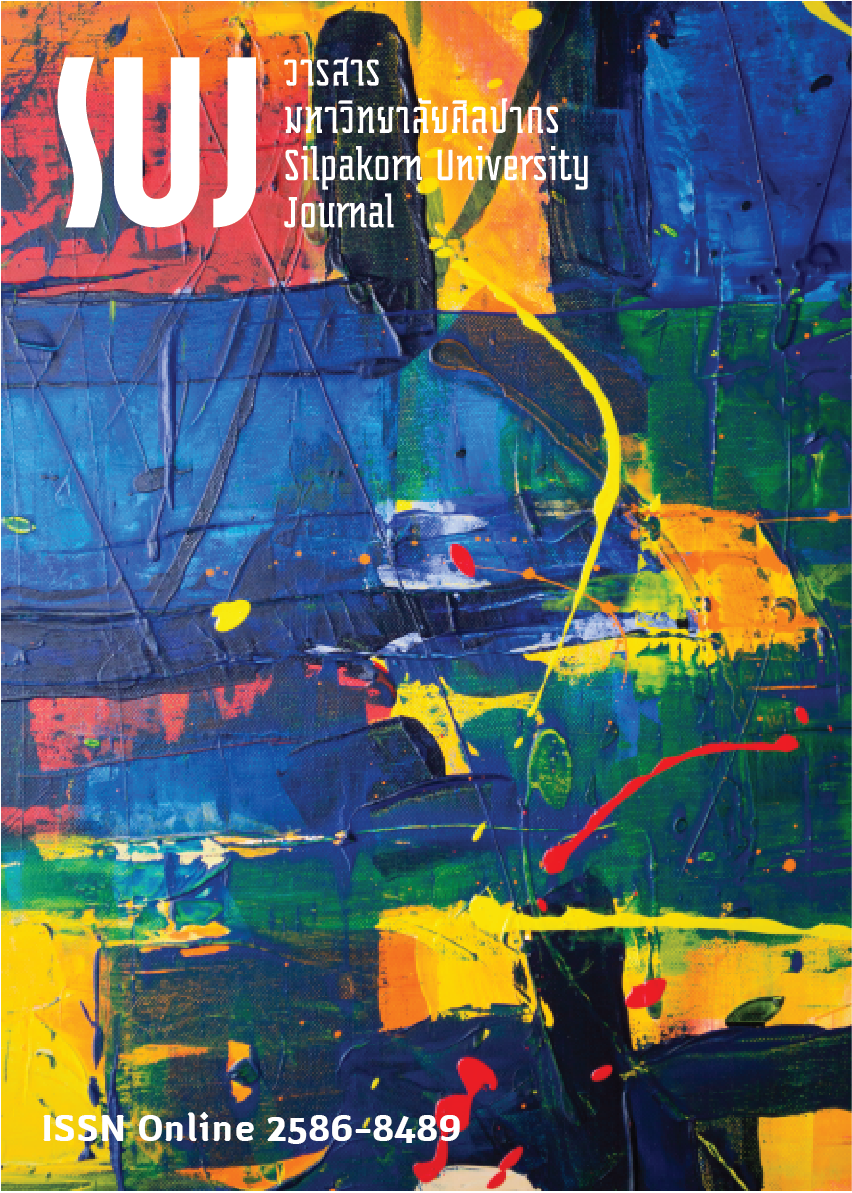ความสัมพันธ์ทางการค้าระหว่างจีนกับเอเชียตะวันออกเฉียงใต้สมัยราชวงศ์ฉินถึงราชวงศ์หยวน (221 ปีก่อน ค.ศ. - ค.ศ.1368) (Trade relation between China and Southeast Asia in Qin dynasty to Yuan dynasty (221 BC - 1368 AD))
Main Article Content
Abstract
หลักฐานเอกสารประวัติศาสตร์จีนโบราณแสดงให้เห็นว่าจีนรู้จักและคุ้นเคยกับดินแดนเอเชียตะวันออกเฉียงใต้มาอย่างน้อยตั้งแต่สมัยราชวงศ์ฉิน จนเมื่อเข้าสู่สมัยราชวงศ์ฮั่นในยุคจักรพรรดิฮั่นอู่ตี้ การติดต่อสัมพันธ์ระหว่างจีนกับรัฐโบราณต่าง ๆ ขยายไปไกลถึงชายฝั่งตอนใต้ของอินเดีย ดังปรากฏว่า รัฐหวงจือ ซึ่งสันนิษฐานว่าตั้งอยู่บริเวณรัฐทมิฬนาฑูปัจจุบันมาถวายบรรณาการต่อราชสำนักฮั่น ขณะที่จีนก็มีการส่งขันทีออกเดินทางทางทะเลรอนแรมไปติดต่อซื้อขายสินค้ากับดินแดนต่าง ๆ นับเป็นการติดต่อค้าขายระยะแรกเริ่ม รวมถึงการปรากฏตัวของระบบบรรณาการ โดยระบบดังกล่าวกลายมาเป็นรูปแบบการติดต่อสัมพันธ์หลักที่จีนกำหนดให้ทุกชาติต้องติดต่อกับตนเอง ซึ่งทุกชาติต้องยอมรับอำนาจความยิ่งใหญ่ด้วยการมาถวายบรรณาการเพื่อแสดงความอ่อนน้อมต่อจีน ขณะที่จีนจะมอบผลประโยชน์ตอบแทนทางเศรษฐกิจจำนวนมหาศาล และส่วนใหญ่จะไม่มีการแทรกแซงทางการเมืองใด ๆ รูปแบบความสัมพันธ์ดังกล่าวจึงเป็นการติดต่อสัมพันธ์แบบที่ต่างฝ่ายต่างสมประโยชน์ จีนได้แสดงความเป็นมหาอำนาจเหนือรัฐรายรอบ ขณะที่รัฐต่าง ๆ ได้รับประโยชน์ทางเศรษฐกิจ เมื่อเข้าสู่ราชวงศ์หยวน ภายใต้ความพยายามขยายอำนาจทางการเมืองออกไปอย่างกว้างขวาง ระบบบรรณาการถูกนำมาบังคับใช้เพื่อให้รัฐน้อยใหญ่เข้ามาอ่อนน้อมต่อราชสำนักมองโกล และเนื่องด้วยผลประโยชน์ทางเศรษฐกิจที่แฝงอยู่กับระบบบรรณาการ ส่งผลให้รัฐต่าง ๆ ยอมเข้ามาอ่อนน้อมต่อมองโกลแต่โดยดี นับเป็นจุดเริ่มต้นของความรุ่งเรืองของการค้าบรรณาการตั้งแต่นั้นเป็นต้นมาก่อนจะเสื่อมลงในปลายสมัยราชวงศ์ชิง
Ancient Chinese historical documents reveal that China has been on intimate terms with Southeast Asia at least since Qin dynasty. The relations between China and various ancient states expanded to the coast of India in Han dynasty during the time of Emperor Wudi of Han. It appears that Huangzhi, which is assumed to be located in Tamil Nadu, sent tributary missions to Han Court, while China dedicated eunuchs to sail for trading with varied lands. This is considered as the initial trading, which includes the arrival of tributary system. The tributary system became a significant custom when contacting, which China required all states to practice. Therefore, all states must accept China’s requirement by offering tributes to show their submissiveness in return of great economic benefits that China rewarded them without any political intervention. Such relationship offered mutual benefit. China showed that it had the authority over the surrounding states; however, those states gained the economic benefits from China. During Yuan dynasty when China attempted to expand political power, the tributary system was used to enforce all states to behave respectfully to Mongol court. Due to the economic benefit that came with the tributary system, several states submitted to Mongol without any resistance. This is the initial period of prosperity of tributary trade before it degenerates at the end of Qing dynasty.
Downloads
Article Details

This work is licensed under a Creative Commons Attribution-NonCommercial-NoDerivatives 4.0 International License.
References
Ban, G. (1962). Book of Han (漢書). Beijing: Zhonghua Book Company.
Fairbank, J. (1953). Trade and Diplomacy on the China Coast. Cambridge, Massachusetts: Harvard University Press.
Gungwu, W. (1958). The Nanhai Trade: A Study of the Early History of Chinese Trade in the South China Sea. Journal of the Malaysian Branch, Royal Asiatic Society, 31(2): 1, 3-135.
Pongsripian, Winai. (2011). Inscriptions of King of Srivijaya and Inscription Sri Maha Raja (จารึกพระเจ้ากรุงศรีวิชัยและจารึกศรีมหาราช). In Orapin Kamsorn (Eds.). 100 Important Documents: Issues in Thai History No. 10 (100 เอกสารสำคัญ: สรรพสาระประวัติศาสตร์ ลำดับที่ 10), (pp. 5-22). Bangkok: Sakdisopha Press.
Silian, Y. (1973). Book of Liang (梁書). Beijing: Zhonghua Book Company.
Stuart-Fox, M. (2000). A Short History of China and Southeast Asia: Tribute Trade and Influence. Singapore: Allen & Unwin.
Twitchett, D. (2009). The Cambridge History of China (Vol. 5). Cambridge, Massachusetts: Cambridge University Press.
Twitchett, D., & Loewe, M. (1986). The Cambridge History of China (Vol. 1). Cambridge, Massachusetts: Cambridge University Press.


